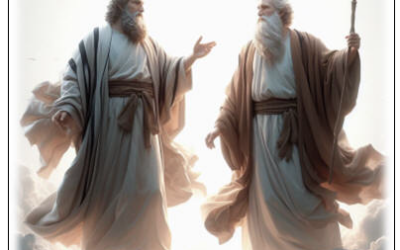Question: Do you know anything about the “Restoration Movement” and any of the churches that came from that movement (i.e. Churches of Christ, Independent Christian Churches, Disciples of Christ, etc.)? Are their doctrines and teachings biblically sound? I am looking at joining a church whose roots are of this movement. Thank you. Xavier
Answer: The “restorationists” as they were called, were people from many different denominational backgrounds. They all held one common belief, namely that Christianity had lost its way and had fallen into apostasy. Some of these groups were originally referred to as “Campbellites.”
The Campbellites were groups led by Thomas and Alexander Campbell and Barton Stone who later split to become the three main groups you inquire about – Churches of Christ (non-instrumental), Independent Christian Churches, and the Disciples of Christ, and are commonly referred to corporately under the title “Restoration Movement” today.
The restorationists taught that the only basis for the church’s existence was Jesus Christ so they would not call themselves anything other than Christ’s disciples. This belief was and is reflected in the names of their churches today – Churches of Christ, Christian Church, Disciples of Christ, etc., over and against such names as Baptist, Presbyterian, or Methodist. While this seems very spiritual it does not lend itself to the Restoration Movement’s stated goal of breaking down barriers between denominations. It became and remains a spiritual “talking point” for some members of the affiliated groups and has resulted in isolation in many instances. There is today an effort underway by many churches within these groups to become more visible and active in their communities, moving away from an isolationist attitude thus fulfilling their original intention.
Doctrinally the Restoration Movement churches originally focused on:
- The practice of weekly communion that they suggested was the New Testament pattern;
- In their teaching of baptismal regeneration (i.e. the act of baptism saves) which many of the Restoration churches still advance based on the Campbell’s teaching – “Remission of sins cannot be enjoyed by any person before immersion,” in Christian Baptism, page 531; “Immersion is the converting act . . . immersion and regeneration are two Bible names for the same act,” in Harbinger Extra; and by F.D. Kershner writing for the Disciples of Christ echoing Campbell: “Baptism by immersion is an act of obedience to Christ, and as such is necessary for the remission of sins and salvation,” cited in F.E. Mayer, The Religious Bodies of America, page 384. Some churches within these denominations have moved away from explicitly teaching baptismal regeneration while other newer splinter groups such as the International Churches of Christ and the so-called Boston Movement churches continue to insist on baptismal regeneration.
- A rejection historically by Barton Stone and his followers of both the deity of Christ and the doctrine of the Trinity (see the Christian Research Institute article at http://www.equip.org/articles/the-churches-of-christ-the-christian-churches-the-disciples-of-christ-), under the guise that doctrine divides Christians. The fact is that doctrine unites and provides the basis for the Christian faith, itself being the systematized teachings of the Bible.
- Historically, in a rejection of Christian creeds, church traditions, and ecclesiastical authority under the proclamation of “no creed but Christ” (see http://www.faithfacts.org/world-religions-and-theology/church-of-christ for a compendium of Church of Christ doctrine as an example). In practice, however, many of the churches that claim lineage to the Restoration Movement do recognize and accept the validity of much of historic Christendom in this important area.
Some of the churches deriving their roots from the Restoration Movement are moving away from some of the above-mentioned doctrines and are becoming more aligned with traditional/historic Christian theology. However there are many that still make most of the doctrines and teachings above a major emphasis, most typically the Church of Christ (non-instrumental).
I direct your attention to a number of resources for a deeper investigation of the Restoration Movement. The Restoration Movement website located at http://www.therestorationmovement.com/ provides many resources toward an understanding of the movement. It presents information from adherents and is thus pro-Restoration Movement. Another resource for research is the Christian Research Institute article at the link cited above. Especially helpful in addition to the article is the bibliography of resources on the Restoration Movement. For a major doctrine by doctrine evaluation of the Restoration Movement see the article by Lutheran pastor Dr. Keith W. Schweitzer at www.chuvala.com/cat41/docs/campbell.doc Dr. Schweitzer’s article while not polemical is not supportive of the Restoration Movement.
Revised 3/09/11






